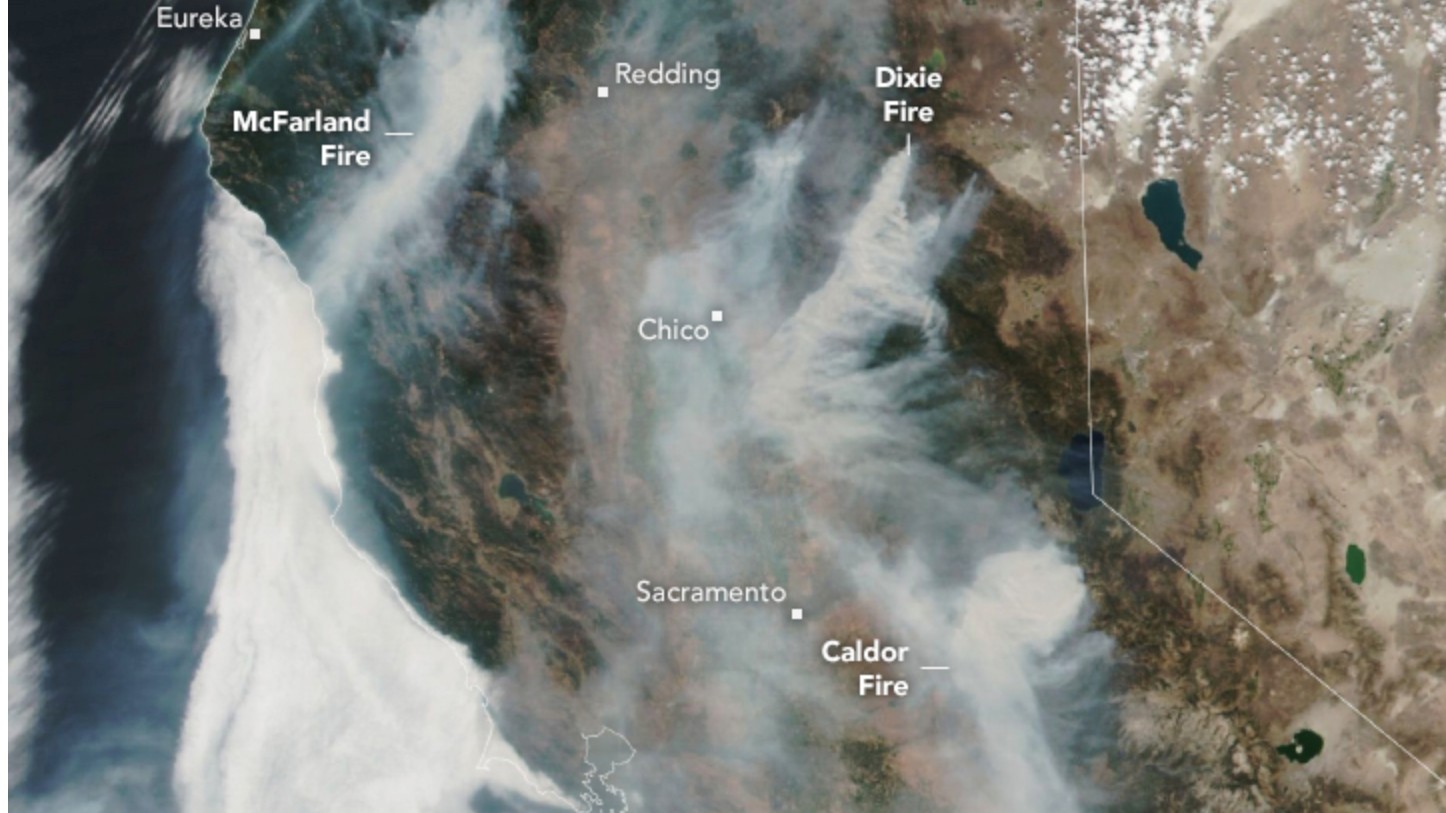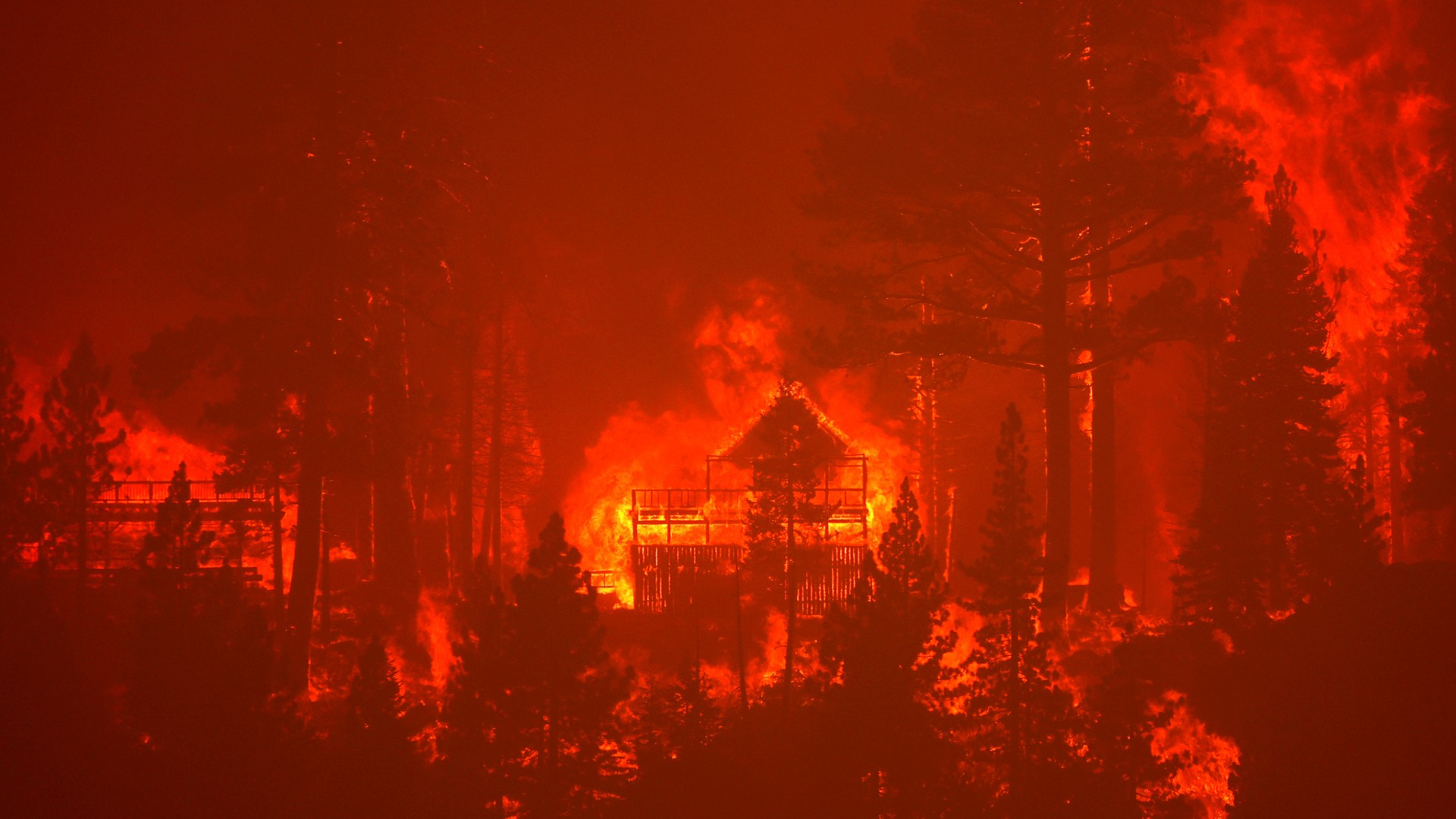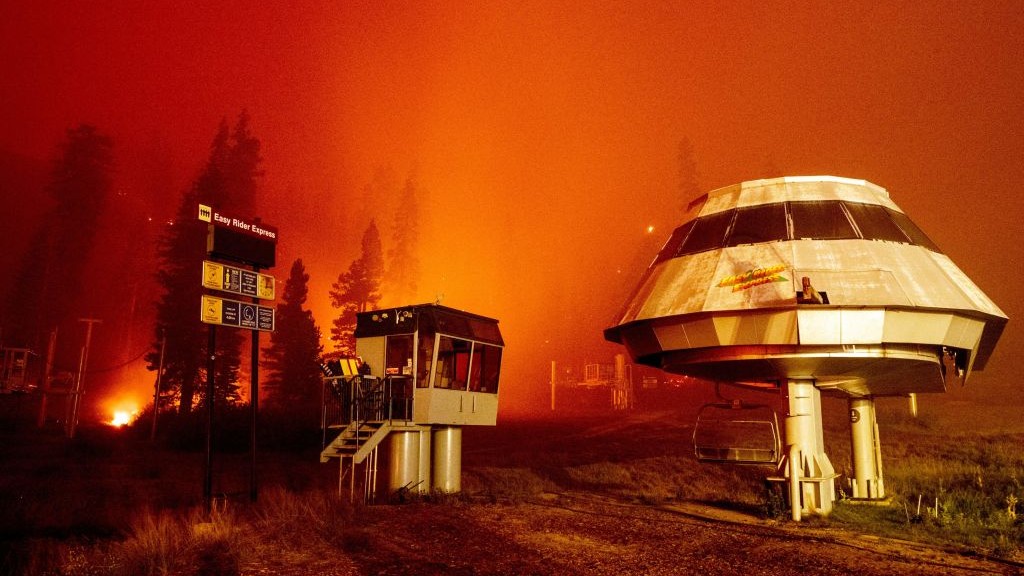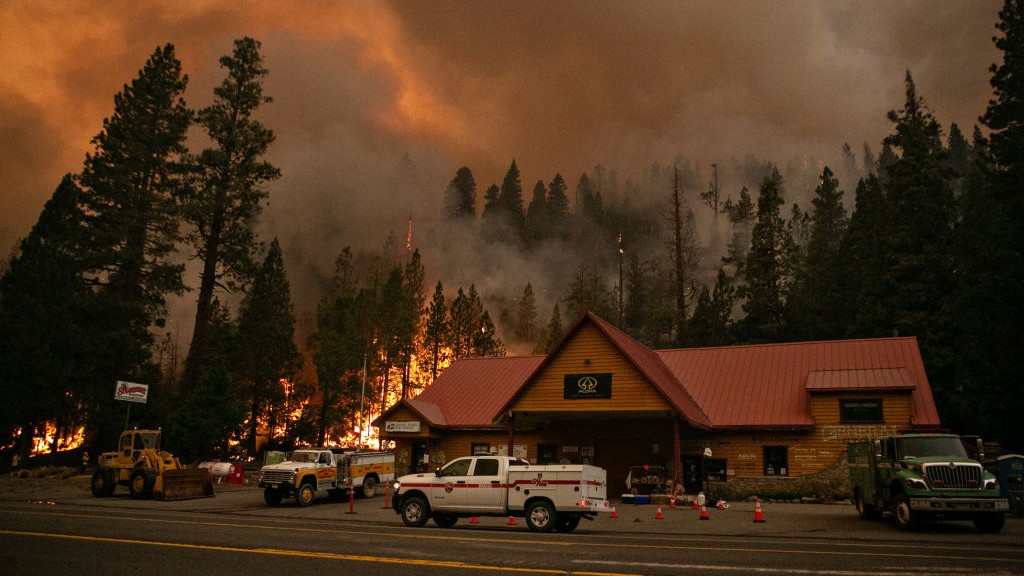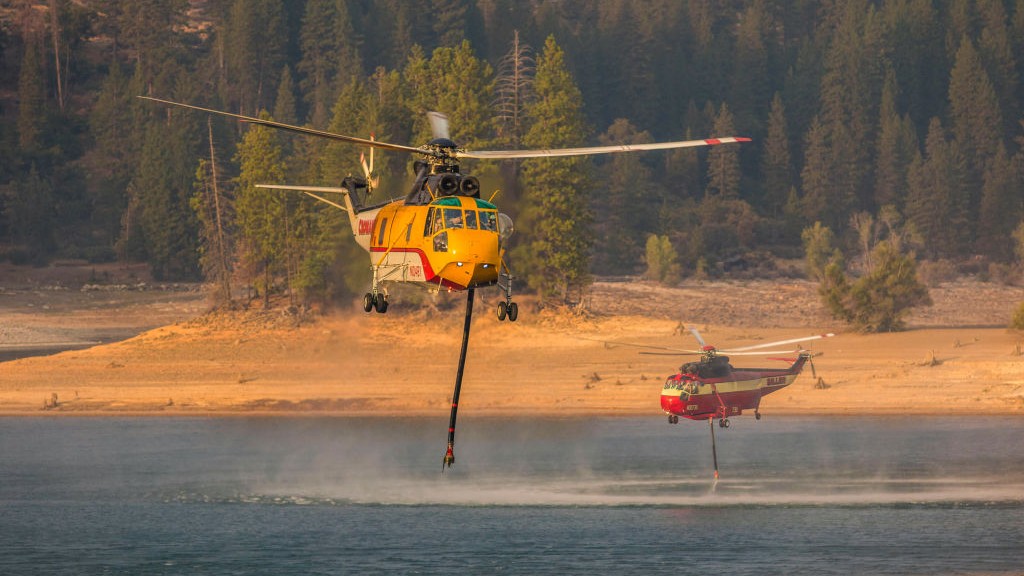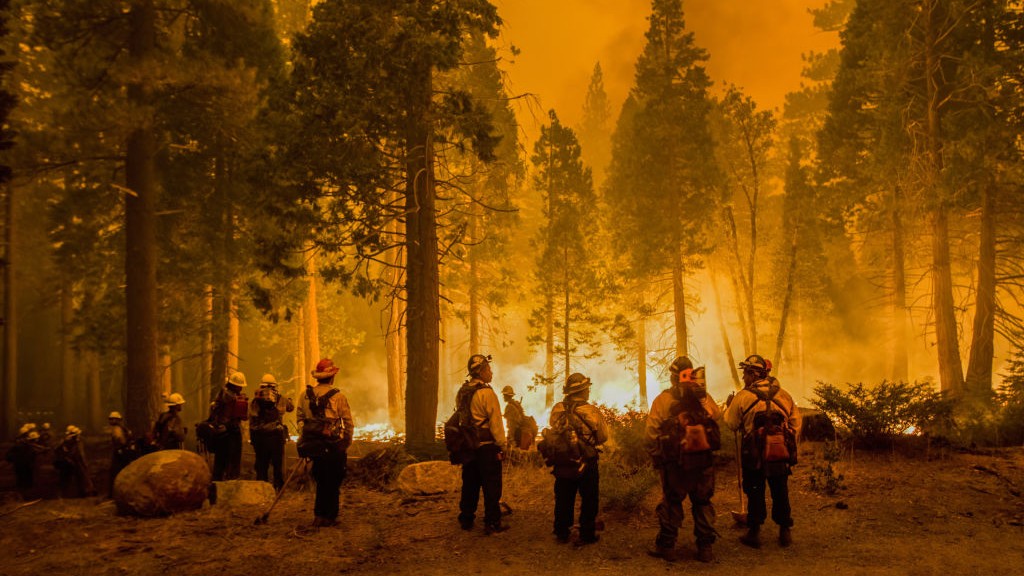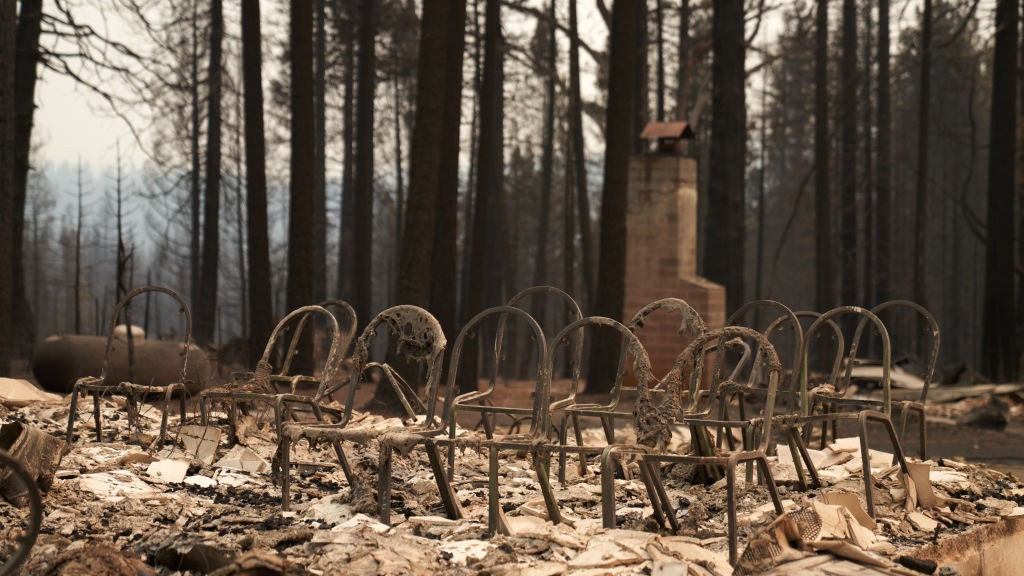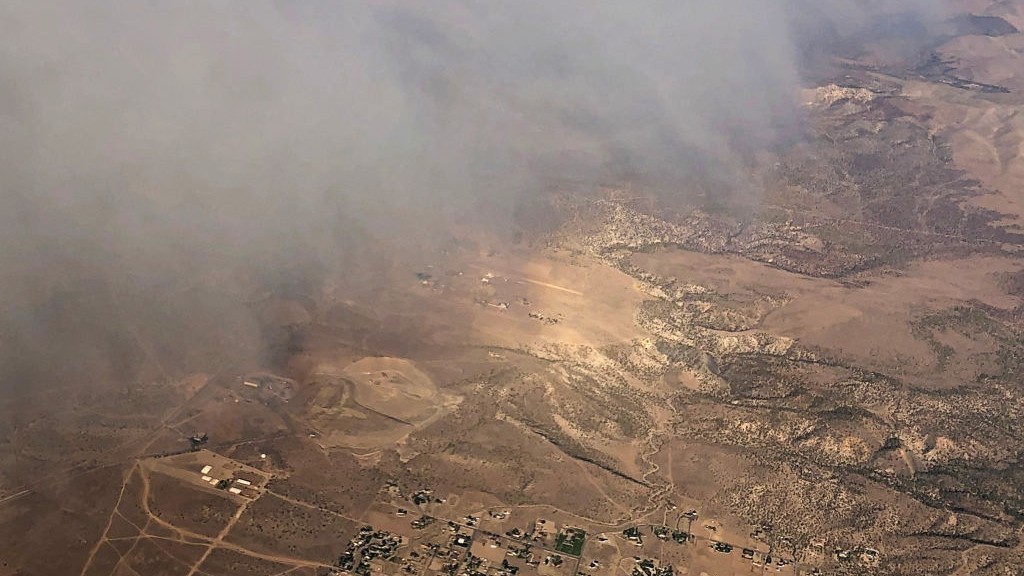Photos: Devastating Caldor wildfire threatens Lake Tahoe
The devastating wildfires are closing in on Lake Tahoe.
The Caldor wildfire ignited near the Sierra town of Pollock Pines, California on Aug. 14, then exploded in size thanks to high winds just a few days later. As of Aug. 31, the fire had burned through 191,000 acres (77,200 hectares) and was less than 20% contained. In the last three weeks it has grown explosively, thanks to hot, parched conditions, and has destroyed several rural mountain towns. It is now advancing towards the iconic vacation spot of South Lake Tahoe. On Aug. 30, tens of thousands of people were ordered to evacuate from the South Lake Tahoe region.
California burns
Landsat satellites captured dramatic images of California's wildfires from space, revealing the extent of the devastation. This image, captured on Aug. 19, shows huge plumes of smoke spreading across much of California, including the newly formed Caldor fire, which "exploded in size on August 16 as winds picked up," according to NASA.
Tearing through homes
The Caldor fire burns homes along a ridge on Aug. 30, near South Lake Tahoe. The fire advanced toward South Lake Tahoe and a red flag warning was issued as high winds began to kick up. The fire has already destroyed hundreds of homes, and is threatening about 20,000 in the region, according to The New York Times.
Fire encircles iconic resort
Flames surround a chair lift at the Sierra-at-Tahoe ski resort, during the Caldor fire in Twin Bridges on Aug. 30. The ski resort was surrounded by a "wall of fire" but escaped destruction for now, and its chair lifts are now being used by firefighters to reach remote and otherwise inaccessible areas of the fire, according to the San Francisco Chronicle. South Lake Tahoe is usually bustling with tourists, but mandatory evacuation orders have been issued for areas on the southern and western sides of the lake.
Strawberry ablaze
In this image, firefighters work to protect the Strawberry Station General Store, near a spot fire that started on a ridge behind the business on Aug. 28. Firefighters are battling the Caldor fire as it creeps closer to South Lake Tahoe. As of Aug. 31 at 10:45 a.m. local time, the fire was 16% contained, according to CalFire.
Fiddle while Caldor burns
Mandatory evacuation orders were issued on Aug. 30 and the one highway out of the region was clogged with traffic. This image shows a man named Mel Smothers playing the violin while stuck in traffic with evacuees, as residents fled the Caldor fire in South Lake Tahoe that day.
Filling up
Two helicopters draw water from a drought-affected reservoir. Helicopters are a key tool to tackle wildfires from the air and target less-accessible areas. The Caldor fire has grown quickly due to parched conditions and hot, gusty winds.
Get the world’s most fascinating discoveries delivered straight to your inbox.
Emergency response
A fire truck heading to the Caldor fire in Riverton on Thursday, Aug. 19. Dry winds raking Northern California helped the Caldor fire east of Sacramento explode from 6,500 acres Tuesday (Aug. 17) to more than 65,000 acres by Thursday morning (Aug. 19), all but destroying the town of Grizzly Flats and hospitalizing two people with serious injuries.
Fighting the fires
Firefighters stand by flames at the Caldor fire after starting a backfire. A backfire is "a fire set along the inner edge of a fireline to consume the fuel in the path of a wildfire or change the direction of force of the fire's convection column," according to the National Wildfire Coordinating Group.
Left in ruin
Chairs from the Grizzly Flats Community Church are still standing after the church was completely destroyed on Aug. 18.
Charred vehicles
The wildfire ripped through Grizzly Flats, leaving very little standing in the small mountain community in the El Dorado National Forest in California on Aug. 20. Here, the burned-out husks of cars are left behind as the fire continues its destructive march.
The smoke spreads
Smoke from the Caldor fire blankets the Lake Tahoe Basin and spreads across the state line into Nevada. Air quality has rapidly deteriorated and at one point, air in the South Lake Tahoe region was the most hazardous in the country, SF Gate reported. Firefighters tackling the Caldor Fire have priority over available resources, as the blaze has become "the number one fire in the country right now in terms of priorities for values at risk," according to El Dorado National Forest supervisor Jeff Marsolais.
Originally published on Live Science.


